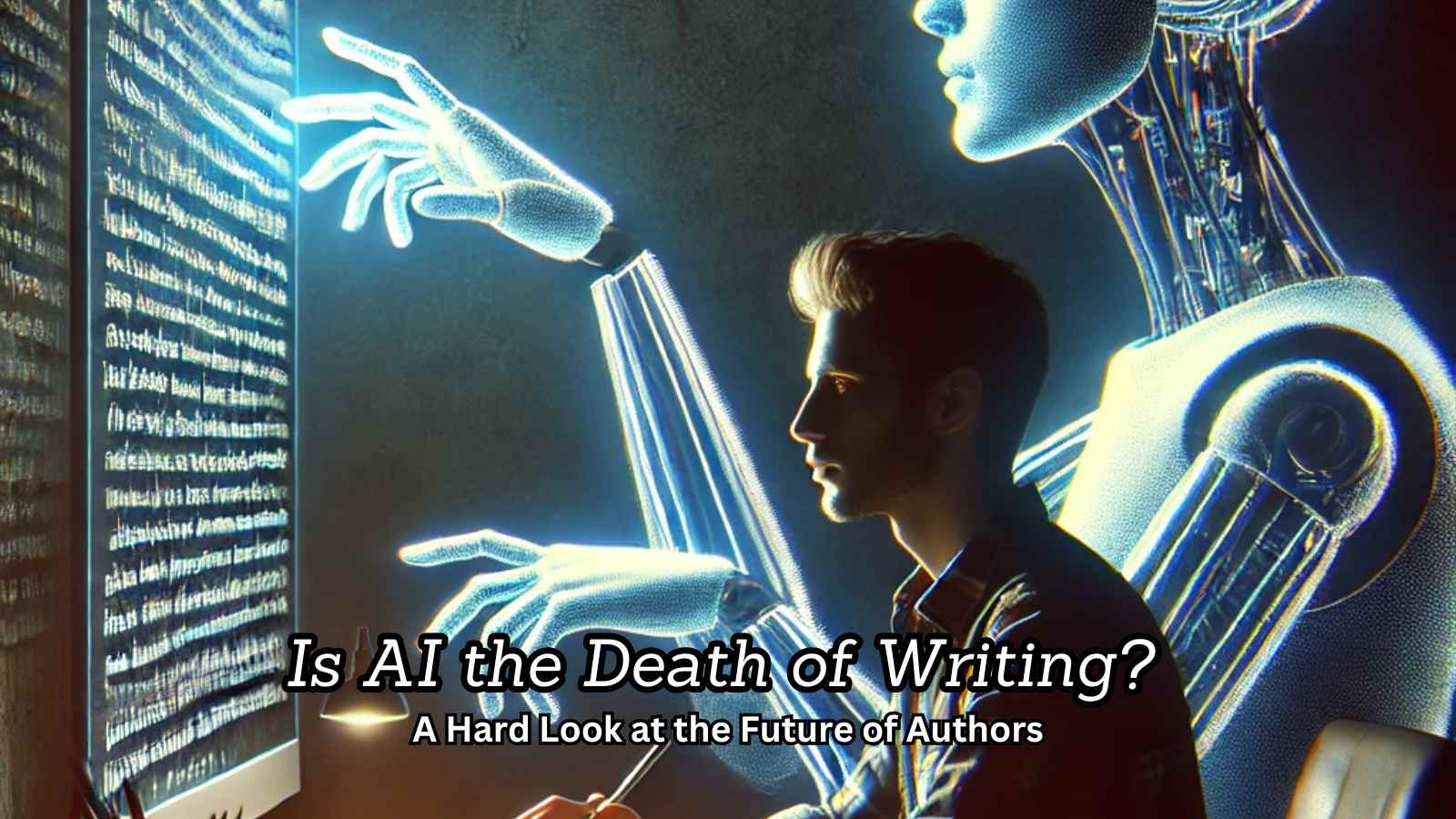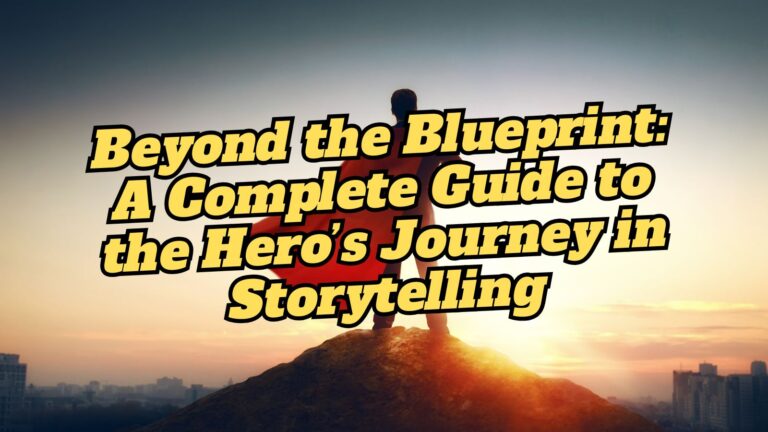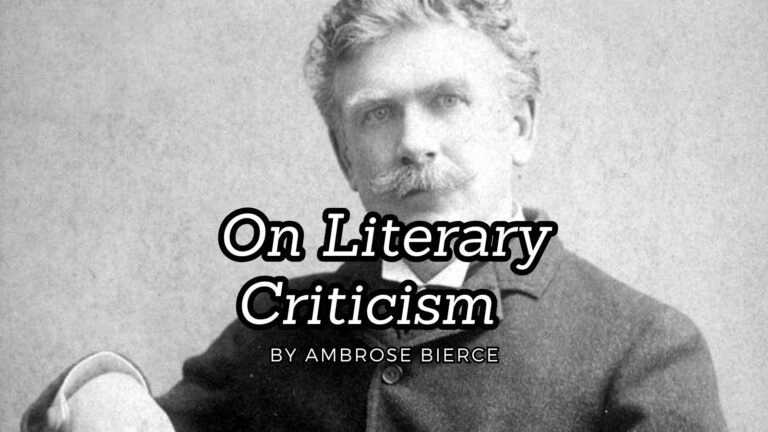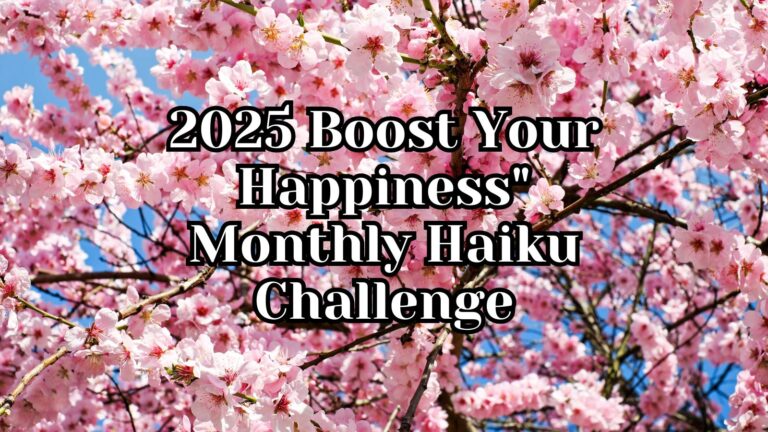
Is AI the Death of Writing? A Hard Look at the Future of Authors
by John Hart
Every morning, somewhere in the world, an author sits down to write – only to pause, fingers hovering over the keyboard, haunted by a question: “Could an AI write this better?” It’s no longer science fiction. ChatGPT crafts essays in seconds, Anthropic’s Claude writes poetry, and Meta’s AI models dream up stories with unsettling ease. Welcome to 2024, where artificial intelligence isn’t just editing our work – it’s competing for our readers.
The numbers tell a stark story. AI writing tools have seen a 300% surge in adoption since 2023, with platforms like Jasper and Sudowrite becoming as common in writers’ toolkits as spell-check. Publishing houses experiment with AI-assisted content creation, while literary magazines grapple with submissions generated by language models. For many authors, this isn’t just about technology – it’s existential. Will their craft, honed over years of human experience, become obsolete in the face of algorithms that never sleep and never get writer’s block?
But beneath these fears lies a more fundamental question: Can artificial intelligence truly capture the essence of human creativity? While AI can analyze patterns, combine ideas, and mimic style with impressive accuracy, it can’t draw from lived experience, feel emotional resonance, or understand the subtle interplay between art and the human condition. As we stand at this crossroads of creativity and computation, we must ask not just whether AI can write, but whether it can tell stories that matter.
The Current AI Writing Landscape
In just a few years, AI language models have evolved from clumsy chatbots to sophisticated writing partners. GPT-4 leads the charge, crafting everything from technical documentation to creative fiction with uncanny precision. Behind it, models like Claude, LLaMA, and PaLM push boundaries in specialized writing tasks, each bringing unique capabilities to the digital writing desk.
These AI models excel at pattern recognition and content generation, producing work that can be indistinguishable from human writing at first glance. They analyze vast datasets of human text, learning to predict which words should follow others with increasing accuracy. Modern AI can adapt its tone, match specific writing styles, and even maintain consistent character voices throughout a narrative. Some models now understand context well enough to generate complex plot structures or technical documents that follow industry standards.
In publishing, the impact is already visible. Major publishing houses use AI for manuscript screening, reducing slush pile reading time from months to days. Marketing teams employ AI to craft compelling book blurbs and targeted social media content. Some publishers experiment with AI-assisted translation, expanding their global reach while cutting costs. Romance imprints use AI to analyze successful plots, helping authors identify trending themes and story structures that resonate with readers.
Yet these applications reveal both promise and limitation. While AI excels at generating content quickly, it still struggles with long-form coherence and original ideation. Publishers report using AI primarily as a tool to enhance human creativity rather than replace it entirely. As one editor noted, “AI helps us work faster, but it hasn’t replaced the human judgment that makes a book worth reading.”
What AI Can’t Replicate
Despite its impressive capabilities, AI still stumbles over the very elements that make writing profoundly human. When an author writes about heartbreak, they draw from the raw memory of their first love’s departure, the taste of tears, the weight of an empty house. AI can describe these experiences using perfect prose, but it cannot feel the visceral ache that makes readers catch their breath in recognition.
Life experience shapes every word a human author writes. Whether it’s the specific way sunlight filters through autumn leaves in their hometown, or how their grandmother’s hands moved while kneading bread, these lived moments create authenticity that AI cannot fabricate. AI operates on patterns and probabilities; it cannot tell you how it felt to hold its child for the first time or what it learned from failing spectacularly at its dreams.
Cultural nuance proves equally elusive for AI systems. While they can process vast amounts of data about different cultures, they miss the subtle undertones that come from living within them. They can’t capture the unspoken rules of a Mexican family dinner, the complex layers of respect in Japanese business interactions, or the shared jokes that bind communities together. These cultural fingerprints come from immersion, not analysis.
Perhaps most significantly, AI lacks original creative vision – that spark of inspiration that drives an author to tell a story that has never been told before. When human authors create, they combine their unique perspectives, personal philosophies, and burning questions about existence into something entirely new. They write not just to generate content, but because they have something specific and urgent to say. AI, in contrast, can only recombine existing ideas in increasingly sophisticated ways. It cannot feel the burning need to explore a theme, challenge a societal norm, or share a perspective that demands to be heard.
This gap between artificial generation and human creation defines the current limitations of AI in writing. While AI can help us write faster and more efficiently, it cannot replace the deeply human elements that make writing an art form rather than just a craft.
Where AI Excels
In the realm of technical writing, AI has proven itself invaluable. It excels at creating clear documentation, API guides, and user manuals with consistent terminology and structure. AI can process complex technical specifications and translate them into accessible language, maintaining accuracy while eliminating the tedium that often plagues human technical writers. This precision makes it particularly valuable in fields like software development, where documentation needs frequent updating.
Content optimization has become AI’s playground. Modern language models analyze engagement patterns, SEO requirements, and reader behavior to refine content for maximum impact. They can suggest headline variations, restructure paragraphs for better flow, and optimize keyword density without sacrificing readability. This data-driven approach helps writers reach their target audience more effectively, turning good content into high-performing digital assets.
When it comes to first drafts, AI shines as a tireless brainstorming partner. It can generate multiple versions of an opening chapter, outline potential plot directions, or create rough drafts of marketing copy in minutes rather than hours. While these drafts often need human refinement, they provide writers with a solid foundation to build upon, breaking through the paralysis of the blank page.
Perhaps AI’s most practical strength lies in editing assistance. Advanced models can spot grammatical errors, identify inconsistencies in tone, and suggest style improvements with remarkable accuracy. They excel at mechanical tasks like checking for passive voice, eliminating redundancies, and ensuring adherence to style guides. This automated assistance frees human editors to focus on deeper aspects of revision, such as narrative structure and thematic development.
These capabilities don’t threaten to replace human writers but rather augment their existing skills. By handling these more mechanical aspects of writing, AI empowers authors to focus on the creative and emotional elements that machines cannot replicate.
The Hybrid Future
As we peer into the future of writing, a new paradigm emerges: one where artificial intelligence and human creativity don’t compete, but collaborate. Writers who once feared AI are discovering it as a powerful ally in their creative arsenal. Like Photoshop for photographers or digital audio workstations for musicians, AI is becoming another tool in the writer’s craft – powerful when wielded skillfully, but useless without human vision.
New opportunities are blooming in unexpected places. Authors are using AI to develop multiple story variants, testing different narrative approaches before committing to a final direction. Some writers leverage AI to explore unfamiliar genres, using it as a guide to understand conventions while adding their unique perspective. Publishers seek authors who can expertly blend AI assistance with original creativity, creating innovative content formats that weren’t possible before. The market increasingly values writers who understand both the capabilities and limitations of AI tools.
The role of human creativity isn’t diminishing – it’s evolving. Writers are becoming creative directors of their work, orchestrating a symphony of AI-assisted tools while maintaining their artistic vision. The most successful authors treat AI as a collaborator rather than a replacement, using it to amplify their voice rather than substitute for it. This shift demands new skills: the ability to prompt effectively, curate AI-generated content, and seamlessly blend machine efficiency with human insight.
What emerges is a future where success depends not on resisting AI, but on mastering it as part of an expanded creative process. The question is no longer whether to use AI, but how to use it in service of more powerful, more human storytelling.
Economic Impact
The publishing industry’s economic landscape is undergoing a seismic shift in response to AI integration. Traditional publishers are restructuring their business models, with some investing heavily in AI tools for manuscript evaluation and market analysis. Others are creating hybrid imprints that combine AI efficiency with human curation, reducing production costs while maintaining editorial standards. The result? A more streamlined publishing process, but one that raises questions about the value of traditional gatekeeping roles.
Writer compensation is evolving in unexpected ways. While AI-generated content has driven down rates in some content markets, it’s simultaneously created premium opportunities for writers who master AI collaboration. Content creators who can effectively use AI tools while maintaining distinctive voices command higher rates than their peers. Paradoxically, as basic writing becomes automated, truly skilled human writing becomes more valuable. Publishers are developing new payment models that account for both AI assistance and human creativity, often separating “generation” fees from “creative direction” compensation.
New business models are emerging at the intersection of human and artificial intelligence. Some authors are launching AI-enhanced writing services, offering personalized content that combines machine efficiency with human insight. Subscription-based platforms are appearing where readers pay for AI-human collaborative content, curated by skilled writers. Publishing startups are experimenting with dynamic pricing models based on the ratio of human to AI input, while established houses create specialized divisions for AI-assisted content development.
However, these changes come with growing pains. Writers’ unions grapple with defining fair compensation in an AI-augmented industry. Questions of intellectual property and attribution become increasingly complex. Yet amid this uncertainty, one trend is clear: the most successful business models are those that find ways to monetize the unique value of human creativity while leveraging AI’s efficiency.
Adaptation Strategies
In an AI-augmented writing landscape, developing a distinctive voice has never been more crucial. Successful authors are focusing on elements that AI cannot replicate: personal experiences, unique perspectives, and authentic emotional resonance. They’re diving deeper into their specialized knowledge, cultural insights, and individual storytelling styles. The goal isn’t to outperform AI at generating content, but to create work that’s unmistakably human and impossible to replicate algorithmically.
Leveraging AI tools effectively requires a strategic approach. Forward-thinking writers are mastering prompt engineering, learning to guide AI tools with precision. They use AI for research and ideation while maintaining creative control over the final product. Some authors employ AI for routine tasks like formatting and basic editing, freeing up mental energy for creative work. Others use it to explore different narrative approaches or generate alternative plot lines, treating AI as a sophisticated brainstorming partner rather than a replacement.
Building human connection has become the cornerstone of sustainable writing careers. Authors are strengthening their relationships with readers through personal newsletters, behind-the-scenes content, and direct engagement – elements that AI cannot authentically replicate. They’re creating communities around their work, sharing their creative processes, and developing personal brands based on genuine interaction. This human-centric approach helps writers maintain their relevance and value in an increasingly automated industry.
The most successful adaptation strategies combine all three elements: a unique voice that stands out from AI-generated content, skillful use of AI tools to enhance productivity, and genuine human connections that create loyal readership. Writers who master this trinity aren’t just surviving in the AI era – they’re thriving.
Conclusion
The future of writing isn’t a battle between human and machine – it’s a partnership that’s redefining creativity itself. As AI tools become more sophisticated, they don’t diminish the value of human storytelling; they amplify our ability to tell stories that matter. The writers who will thrive in this new era aren’t those who resist change, but those who harness it to enhance their unique creative vision.
Looking ahead, we see a landscape where AI handles the mechanical aspects of writing, freeing human authors to focus on what they do best: crafting narratives that resonate with emotional depth and authenticity. The technology will continue to evolve, but the heart of storytelling – the human experience – remains irreplaceable. AI can generate countless variations of a story, but only human authors can infuse those stories with genuine meaning, cultural understanding, and emotional truth.
This isn’t the death of writing – it’s a renaissance. Just as the printing press democratized knowledge and word processors transformed the writing process, AI is ushering in a new chapter in the history of human creativity. The future belongs to writers who understand that technology isn’t their replacement, but their ally in creating deeper, richer, more impactful stories. In a world increasingly mediated by artificial intelligence, authentic human voices become not just valuable, but essential.
John Hart is a technology writer and accountant based in Salt Lake City. His work explores the intersection of artificial intelligence, finance, and creativity. His articles have appeared in major tech and publishing journals, and he regularly speaks at industry conferences about the future of writing in the digital age.
- Is AI the Death of Writing? A Hard Look at the Future of Authors - February 8, 2025





